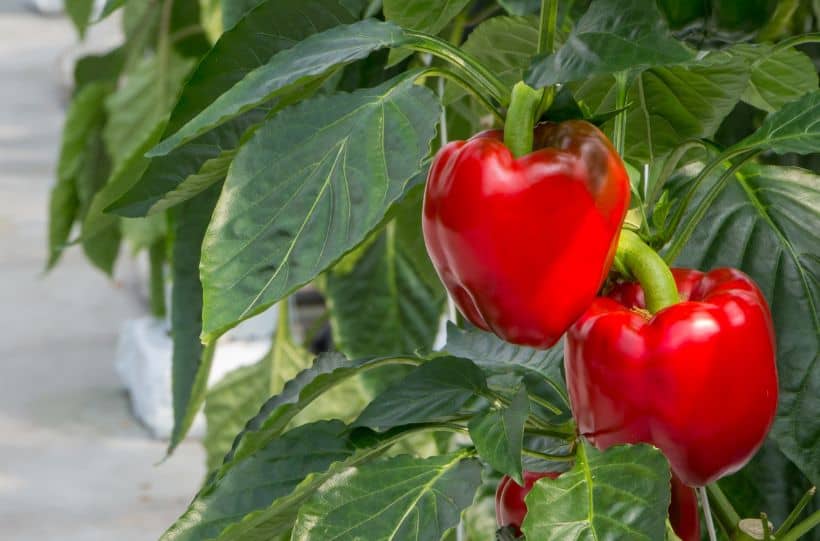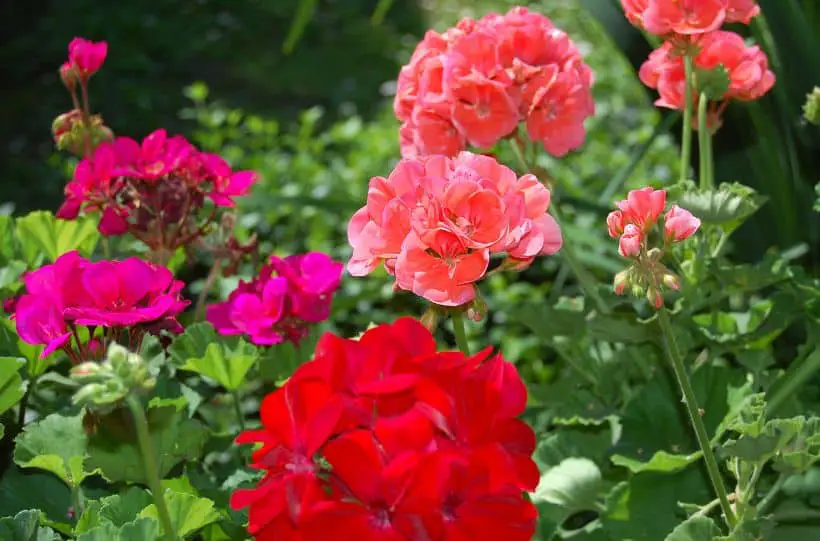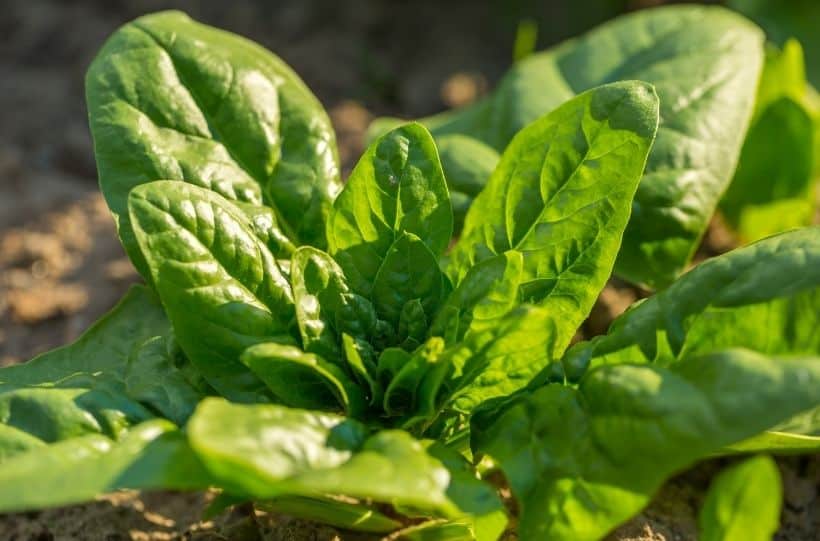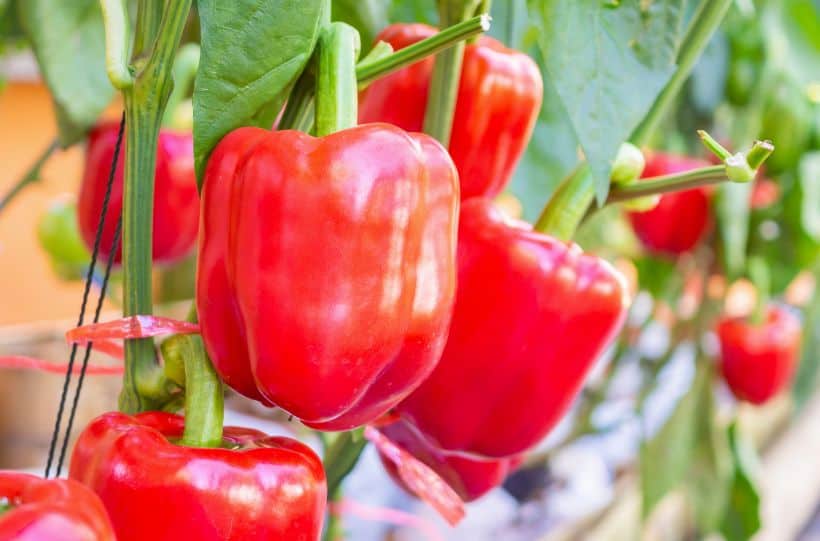11 of The Best Pepper Companion Plants
Peppers are another plant that benefits from companion planting. Choosing the right plants to grow with your peppers is important to ensure they don’t compete for nutrients, space, or sunlight. Peppers especially like a lot of sunlight, so it is best to avoid tall, leafy plants.
The best pepper companion plants attract beneficial insects or deter pests. They help to support peppers to grow without negatively impacting them.
Follow this list of pepper companion plants that are suitable for growing alongside your peppers (plus, what NOT to plant near your peppers!)

Best Pepper Companion Plants
Alliums
Alliums are an excellent companion plant for many vegetables due to their strong scents. Vegetables such as onions, garlic, and scallions all grow well alongside peppers. They don’t compete for resources and help deter pests such as aphids from feeding on your pepper plants.
Geraniums
Geraniums are an excellent choice to help distract and deter pests away from your pepper plants. They act as a trap crop attracting pests such as Japanese beetles and cabbage worms away from your peppers.

Although they are very colorful once in full bloom, geraniums unfortunately do not attract many pollinators to your vegetables. They let off a scent that is unappealing to bees and the pollen is challenging to access.
It is a good idea to plant geraniums amongst your pepper plants, however, consider planting some plants that will attract pollinators to your vegetable patch.
Nasturtiums
Similar to geraniums, nasturtiums are a great trap crop for pests. Their bright, orange flowers and sweet scent not only deter pests from eating your pepper plants but also attract a wide variety of pollinators including bees and hummingbirds.
Their flowers are bold and contain sweet nectar that is easily accessed by pollinators due to the large, open-shaped flowers.
Petunias
An additional trap crop to consider that is an ideal pepper companion plant is petunias. These beautifully colored flowers help to deter other garden pests such as leafhoppers, aphids, and hornworms.

To create a strong defense against pests, petunias would be best planted alongside other trap crops to work together against a range of insects.
Buckwheat
This tall plant is excellent at attracting the right insects to your garden such as pollinators. As it grows, it doesn’t compete for space or resources with your pepper plants.
Once it has finished growing, it can be cut and laid down around your pepper plants to act as a green mulch, helping to protect the soil from moisture loss and weeds.
Dill
Planting dill alongside your pepper plants can offer multiple benefits. Firstly, its strong scent helps to deter pests such as aphids from attacking your pepper plants.
Secondly, the same strong smell helps attract pollinators and other beneficial insects into your vegetable patch.
Finally, dill has been known to improve the flavor of surrounding vegetables when planted nearby.
Squash
Squash is another crop that grows well when planted alongside peppers. Neither plant competes for nutrients and as the squash plants grow, their large leaves help to provide shade as well as take up space to prevent weeds from establishing.
Eggplant
Though eggplant does not provide any benefit to peppers when grown together, they do make an excellent companion plant.

As both peppers and eggplants are both nightshades, they require the same soil conditions and maintenance. They are also ready to harvest around the same time.
Hence, planting together makes sense to make the most of your growing space and, help protect both crops at the same time with the flowers listed in this post.
Rosemary
As a pepper companion plant, rosemary is incredibly beneficial. It acts as a ground covering plant to protect the soil from a loss of moisture.
This helps your pepper’s growth by minimizing the amount of water lost from the soil during the hot summer months. As a ground-covering plant, rosemary also helps to prevent weeds from growing and competing with your pepper plants.
Corn
Corn benefits peppers due to their height. As they grow during the summer months, they help to provide vital shade to your growing pepper plants. They also can act as a windbreak to minimize damage to delicate pepper stems.
Spinach
Spinach is a fast-growing crop only taking approximately 45 days to fully grow from seeds. As it grows much faster than pepper plants, its leaves can protect the pepper seedlings and soil from direct sunlight.

However, once your pepper plants begin to establish and grow, your spinach will be ready to harvest and removes the need to compete for space.
What NOT To Plant With Peppers
As with all crops, there are certain plants you should not plant anywhere near your pepper plants.
Brassicas such as cabbage, cauliflower, and broccoli are not suitable to be planted near your peppers. Although their growth doesn’t necessarily affect your peppers, they require different soil acidity levels. This would make it challenging to grow both plant types effectively together.
Another plant to avoid is fennel. Fennel releases a chemical that inhibits the growth of other plants planted within proximity to it. Though it can be excellent to attract pests away from your peppers, it is best not to plant too close.
Finally, avoid planting peppers near an apricot tree. Peppers can pass on a disease to apricot trees that they are incredibly vulnerable to. If your apricot trees come into contact with this disease, their growth will be reduced, they will produce fewer fruits, and eventually die altogether.

By planting the right companion plants alongside peppers, you can have a thriving vegetable garden and abundant harvest. It is best to plant a range of suitable pepper companion plants from this list to not only combat a variety of pests but also attract beneficial pollinators while supporting other compatible vegetables too.
For more companion planting guides, take a look at these posts on what to plant alongside popular vegetables:
